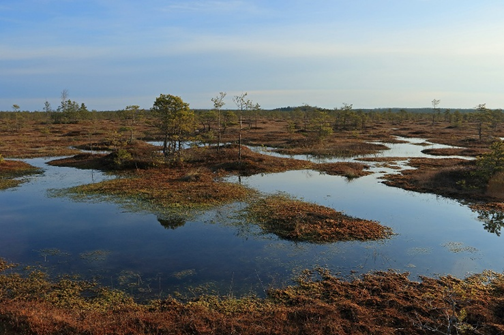- Wetland protection
- Peatland restoration
- Mire restoration
- Marsh restoration
- Peat bog restoration
- Constructed wetland
According to the Convention on Wetlands (1971), a wetland is an area of marsh, fen, peatland or water, whether natural or artificial, permanent or temporary, with water that is static or flowing, fresh, brackish or salt, including areas of marine water the depth of which at low tide does not exceed six metres.
Wetlands play a crucial role in regulating the global climate and are natural biofilters for pollutant removal, nutrient absorption, and the efficient detoxification of many toxic and harmful chemicals into non-toxic forms. They are considered one of the most productive ecosystems, acknowledged by the United Nations to achieve SDG-6 (clean water and sanitation).
Wetlands provide a wide range of services, including water retention, biodiversity enhancement, and water quality improvement. There are many examples where wetlands reduce floods, recharge groundwater, or augment low flows. Wetlands can effectively enhance resilience to floods with low return periods and may reduce the duration and severity of droughts. They can remove or reduce both organic and inorganic pollutants from different sources, contributing to cleaner water.
Wetland restoration and management can involve : technical, spatially large-scale measures (including the installation of ditches for rewetting or the cutback of dykes to enable flooding); technical small-scale measures such as clearing trees; changes in land-use and agricultural measures, such as adapting cultivation practices in wetland areas. They can improve the hydrological regime of degraded wetlands and generally enhance habitat quality.
Creating artificial or constructed wetlands in urban areas can also contribute to flood attenuation, water quality improvement and habitat and landscape enhancement.
